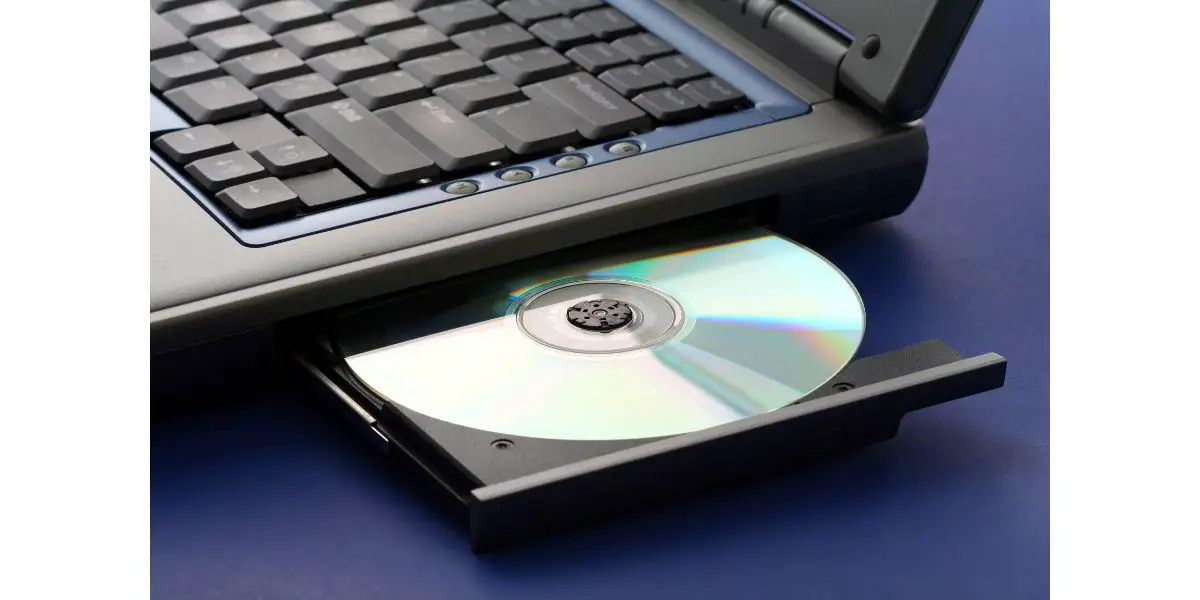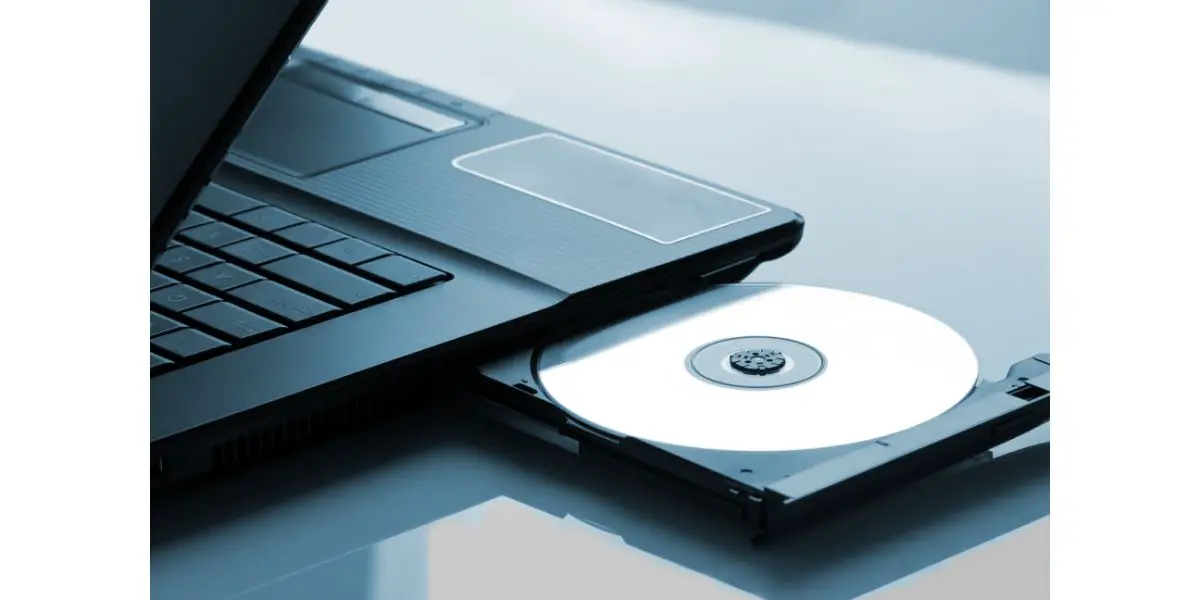Disclaimer: This post may contain affiliate links, meaning we get a small commission if you make a purchase through our links, at no cost to you. For more information, please visit our Disclaimer Page.
A couple of decades ago, every laptop came with a disc drive, where optical discs could access any kind of data, from simple documents to movies, video games, or programs. Nowadays, laptops have done away with disc drives entirely; how come disc drives are no longer present in modern devices?
Table of Contents
How Disc Drives in Laptops Slowly Disappeared
The phrase burning a CD may mean nothing but the literal action of setting a disc on fire to a gen Z kid, but years ago, it was a popular term for copying data onto a new, empty disc. Disc drives were standard for decades in all computers and laptops, providing an easy way of storing and sharing different types of data using optical discs.
However, their popularity declined after 2010 as new technological developments were ushered in. Laptop manufacturers took advantage of these new technologies that were superior in many ways to disc drives. Users also found better ways of storing data, abandoning optical discs.
Starting in 2015, laptop manufacturers stopped including disc drives in most models, while stores stopped selling CDs and DVDs. For some time after that, gaming laptops kept including disc drives, but eventually, even gaming models removed the disc drive. Nowadays, these drives are incredibly rare in gaming laptops or otherwise.
Here are some reasons why disc drives in laptops are no longer present:
The Disc Drive Takes Up a Significant Amount of Space
An optical disc has a diameter of 4.7 inches (12 cm), meaning a disc drive would need at least a 4.7 x 4.7 inches (12 x 12 cm) area on any device. In the past, laptops were thick and relatively heavy. One of the reasons laptops were bigger in the past was the presence of a disc drive, which occupied a significant amount of physical space.
However, laptop manufacturers strived for more portable devices that could be easier to hold and carry around all day. As laptops got smaller and thinner, they could no longer create space for a drive that would take almost a quarter of their available surface area.
The Drive Consumes a Lot of Battery Energy
A disc drive requires a fair amount of energy to work because it basically spins the optical disc at a very high speed. This could be a problem for laptops since they run on a limited amount of energy the battery provides.
It’s important to emphasize that overall the effect on the battery is not noticeable in the short term. However, the disc drive could make a difference in the battery life of a laptop in the long term. For manufacturers who seek to preserve the battery life of laptops as much as they can, doing away with disc drives is a significant opportunity.
Optical Discs Are Very Fragile
While the drive has its own issues, the optical discs themselves are less than ideal as data-sharing devices for different reasons. One of them is the fact that they are pretty fragile. If you’ve used optical discs before, you know not to let the bottom part of the disc get the slightest scratch since the device may get irreparably damaged.
This problem with durability is a major weakness of optical discs, so it’s no surprise that users turned away from these devices once they were presented with alternatives. As newer technologies allow data to be shared in much more durable devices, optical discs become obsolete.
The Capacity of Optical Discs Is Quite Limited
Another weakness of optical discs that has contributed to the disc drives becoming obsolete in laptops is the limited capacity. A DVD can have a maximum capacity of almost 5GB, while blu ray discs have a maximum capacity of 50 GB. It’s hard to find higher-capable optical discs because they’re hard to produce.
On the other hand, flash drives can reach 256 GB easily, while external hard drives can have a maximum capacity of 2 TB. While the capacity of DVDs and blu ray discs was enough for some movies or video games, it became insufficient as the image quality of movies and series increased, and video games became more sophisticated.
Streaming Eliminated the Need for Physical Media
Before streaming, CDs, DVDs, and Blu-Ray discs were the only way to watch films or listen to music whenever you wanted legally. CDs and DVDs were so present in people’s lives that they had to be considered when making furniture. You won’t be able to see CD compartments in entertainment centers nowadays.
As internet connections became faster and devices became smarter, it was easier to download or stream media rather than own a physical copy. Streaming music or movies allowed people to access media wherever they were, using just their internet connection. Additionally, there was no need to physically store all the DVDs and CDs, which took up considerable space.
Solid State Technology Became More Popular
USBs were introduced in the mid-1990s but became widely available in the 2000s. Manufacturers like solid-state drives because they take up less space and require less energy to work, both important qualities for laptops. Users also like these devices better for several reasons:
- USB drives take up much less space and are more portable; they can fit anywhere without problem, unlike optical discs.
- The maximum capacity of an optical disc is much smaller than that of a USB drive, as you saw above.
- It takes longer to download data from a CD or DVD than from a flash drive, so the latter saves you a lot of time.
- Optical discs are easily damaged, which could cause you to lose important data and go through complicated processes to retrieve it; USB drives are much more durable.
Nowadays, even flash drives are starting to become obsolete. With cloud storage becoming widely available, there is no need for physical storage anymore. People can store everything they want in a virtual space online, which they can access anywhere, as long as they have an internet connection.
What Can You Do With Your Collection of DVDs?
Phasing out disc drives in laptops is beneficial to users because it allows them to work with better and faster devices while saving a lot of space. However, those who had a lot of CDs, DVDs, and blu rays in the past may want to be able to access them at any time, even if their devices no longer have disc drives.
Thankfully, various methods can help you access the data on your old DVDs or blu rays. You can get an external drive that connects to your laptop or computer or rip the data from your discs using particular software.
The first method I explain below is great for playing your DVDs as often as you want. However, if you wish to access the data without using the physical disc, you can rip them and store them on your computer.
Ripping requires software that can help you copy the data from the disc to your chosen file; you can use iTunes, WinX, Handbrake, or other free programs.
It also requires a disc drive device; otherwise, you wouldn’t be able to access your DVD or blu ray at all. However, you only need such a device once, and then you can access your data anytime on your computer.
You can get an external disc drive if you can’t find a laptop with a disc drive to help you rip the content from your DVDs or blu-rays.
Using an External Disc Drive
As you can tell from everything I have explained above, laptop manufacturers seem to have moved on from optical disc technology. Because everything is digital nowadays, the chances of needing a disc drive are low. However, a few companies still produce gaming laptops with disc drives, although they are quite hard to find.
If you use a disc drive regularly for some reason, then you should look for these specific laptops. However, if you only need a disc drive for occasional use, you can find an external one. These drives can be connected to your laptop or computer using a USB port and are cheap.
An external disc drive is made to play optical discs for devices without a disc drive. They cost as little as $20, but you need one that suits your purpose. Some external disc drives are read-only, meaning you can’t move or change the data inside the CD or DVD you want to play. Moreover, some can’t even play blu ray discs.
A read-only external drive is fine if you only want to watch a movie using a DVD. However, if you want to retrieve data from an optical disc, you should ensure that your external disc drive will allow you to do that.
Conclusion
Disc drives used to be a staple for laptops and computers because they allowed you to use optical discs to access and share data, including music, movies, and video games. However, as laptops became slimmer and lighter and USB drives were introduced as superior data-sharing devices, it’s understandable why manufacturers decided to remove these drives.



